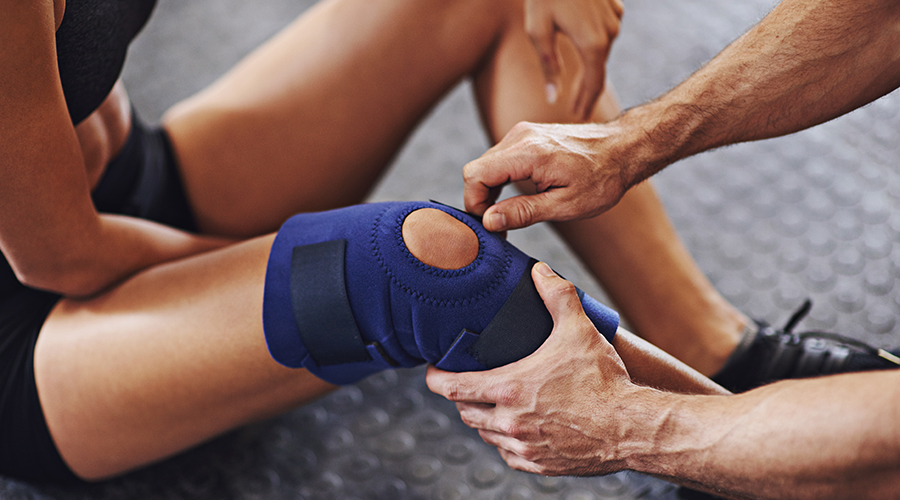[et_pb_section admin_label=”section” transparent_background=”off” background_color=”#ffffff” allow_player_pause=”off” inner_shadow=”off” parallax=”on” parallax_method=”off” padding_mobile=”off” make_fullwidth=”off” use_custom_width=”off” width_unit=”on” make_equal=”off” use_custom_gutter=”off”][et_pb_row admin_label=”row” make_fullwidth=”off” use_custom_width=”off” width_unit=”off” use_custom_gutter=”off” padding_mobile=”off” allow_player_pause=”off” parallax=”off” parallax_method=”off” make_equal=”off” parallax_1=”off” parallax_method_1=”off” column_padding_mobile=”on” custom_width_percent=”100%”][et_pb_column type=”4_4″][et_pb_post_title admin_label=”Post Title” title=”on” meta=”on” author=”on” date=”on” categories=”off” comments=”off” featured_image=”on” featured_placement=”below” parallax_effect=”on” parallax_method=”on” text_orientation=”center” text_color=”light” text_background=”off” text_bg_color=”rgba(255,255,255,0.59)” title_text_color=”#000000″ title_all_caps=”off” meta_text_color=”#000000″ use_border_color=”off” border_color=”#ffffff” border_style=”solid” title_font=”Crimson Text|||on|” title_font_size=”34px” module_bg_color=”rgba(255,255,255,0)” meta_font=”||on||” title_line_height=”1.1em”] [/et_pb_post_title][/et_pb_column][/et_pb_row][/et_pb_section][et_pb_section admin_label=”Section” fullwidth=”off” specialty=”off” transparent_background=”off” background_color=”#ffffff” allow_player_pause=”off” inner_shadow=”off” parallax=”off” parallax_method=”off” padding_mobile=”off” make_fullwidth=”off” use_custom_width=”off” width_unit=”on” make_equal=”off” use_custom_gutter=”off”][et_pb_row admin_label=”Row”][et_pb_column type=”4_4″][et_pb_text admin_label=”Text” background_layout=”light” text_orientation=”left” use_border_color=”off” border_color=”#ffffff” border_style=”solid” custom_margin=”-125px||-15px|”]
Two MDs and a trainer show the lengths consumers will go to recover like the pros.
Sports have one thing in common: injury. And injured players, whether they’re professional or amateur, all have something riding on being healthy in the game.
“For people playing recreationally, it may impact their psychological wellbeing. For youth athletes, it can affect their status for acquiring a scholarship for college,” said Dr. Jon Hyman, an orthopedic surgeon specializing in sports medicine. Hyman received his degrees at Stanford and Harvard, and has been the Team Physician for MLB’s New York Mets, the NFL’s New York Giants and Atlanta Falcons and other pro teams. “Pro or consumer,” he continued, “there’s always a lot on the line.”
Fellow orthopedic surgeon and sports medicine specialist Dr. David Geier added that the same types of injuries pop up in the same sport — doesn’t matter if you’re Steph Curry or the weekend warrior playing pick-up. The only difference is that the pros have a higher percentage of overuse injuries like stress fractures and patellar tendonitis thanks to, for example, the rigorous 82-game NBA season.
[/et_pb_text][/et_pb_column][/et_pb_row][et_pb_row admin_label=”Row”][et_pb_column type=”1_2″][et_pb_text admin_label=”Text” background_layout=”light” text_orientation=”left” use_border_color=”off” border_color=”#ffffff” border_style=”solid”]
Each sport has a different hot zone for injury, primarily within the body’s larger joints (i.e. shoulder, hip, knee, elbow). Here’s Dr. Hyman’s list of sports and the injuries most commonly associated with them:
- Football – knee and concussions
- Basketball – ankle and knee
- Hockey – hip and shoulder (lots of facial and head injuries too)
- Baseball – shoulder and elbow
- CrossFit – knee and shoulder
- Yoga – hip and pelvis
- Running – knee, hip and feet.
[/et_pb_text][/et_pb_column][et_pb_column type=”1_2″][et_pb_image admin_label=”Image” src=”https://sgbonline.com/wp-content/uploads/2016/11/Dr.-Hyman-1.jpg” show_in_lightbox=”off” url_new_window=”off” use_overlay=”off” animation=”off” sticky=”off” align=”center” force_fullwidth=”off” always_center_on_mobile=”on” use_border_color=”off” border_color=”#ffffff” border_style=”solid”] [/et_pb_image][et_pb_text admin_label=”caption” background_layout=”light” text_orientation=”left” text_font_size=”12″ use_border_color=”off” border_color=”#ffffff” border_style=”solid”]
Dr. Hyman
[/et_pb_text][/et_pb_column][/et_pb_row][/et_pb_section][et_pb_section admin_label=”Section” fullwidth=”off” specialty=”off” transparent_background=”off” background_color=”#ffffff” allow_player_pause=”off” inner_shadow=”off” parallax=”off” parallax_method=”off” padding_mobile=”off” make_fullwidth=”off” use_custom_width=”off” width_unit=”on” make_equal=”off” use_custom_gutter=”off”][et_pb_row admin_label=”Row” make_fullwidth=”off” use_custom_width=”off” width_unit=”on” use_custom_gutter=”off” padding_mobile=”off” allow_player_pause=”off” parallax=”off” parallax_method=”off” make_equal=”off” parallax_1=”off” parallax_method_1=”off” column_padding_mobile=”on”][et_pb_column type=”4_4″][et_pb_text admin_label=”Text” background_layout=”light” text_orientation=”left” use_border_color=”off” border_color=”#ffffff” border_style=”solid” custom_margin=”-125px||-50px|”]
Emulating The Pros
The medical correlation between injury and sport provides a roadmap for active lifestyle brands and retailers to aid certain consumers in the recovery category. Products that suit the most commonly injured areas are an entry point for various users. You want to target the youth football consumer? Design or stock knee braces and helmets. You need to improve sales in basketball? Install an ankle and knee wraps/braces wall beside the Nike LeBrons.
With new training technology and nutrition know-how, athletes at all levels are getting stronger and better at their sport. The injuries are still there — and always will be — and although there hasn’t been a dramatic increase in injury as athletes push to get faster, go longer and play for a lifetime, recovery is on the rise.
Matt Vaughn, a nationally certified athletic trainer and head of Pro-Tec Athletics’ customer training clinics, told SGB, “I’ve seen a rise in sales of light compression sleeves for the legs and arms, particularly, driven by media exposure of recovery items in pro sports and more fashionable colors and styles.”
A great example is the NBA, where golden boys Stephen Curry and LeBron James both rock a piece of recovery gear. Curry has undergone a number of ankle surgeries and wears a brace as a preventative tool. Meanwhile, LeBron dons a compression sleeve for its supposed performance-aiding benefits.
These are ultimately the two schools of recovery gear popular in the market today: preventative and performance-aiding. But no matter how you sling it, consumers have latched on to the look of being a pro, from the shoes to the drinks to the braces. “Younger consumers are wearing these types of products regardless of being injured or not,” Vaughn said.
[/et_pb_text][/et_pb_column][/et_pb_row][et_pb_row admin_label=”Row”][et_pb_column type=”1_3″][et_pb_image admin_label=”Image” src=”https://sgbonline.com/wp-content/uploads/2016/11/Dr.jpg” show_in_lightbox=”off” url_new_window=”off” use_overlay=”off” animation=”off” sticky=”off” align=”center” force_fullwidth=”off” always_center_on_mobile=”on” use_border_color=”off” border_color=”#ffffff” border_style=”solid”] [/et_pb_image][et_pb_text admin_label=”caption” background_layout=”light” text_orientation=”left” text_font_size=”12″ use_border_color=”off” border_color=”#ffffff” border_style=”solid”]
Dr. David Geier
[/et_pb_text][/et_pb_column][et_pb_column type=”2_3″][et_pb_text admin_label=”Text” background_layout=”light” text_orientation=”left” use_border_color=”off” border_color=”#ffffff” border_style=”solid”]
Recreational players across all sports are getting a bulls-eye painted on their backs by sports-recovery tech companies that used to cater wholly to the pros, along with QVC-type entrepreneurs and even traditional sports apparel brands, said Dr. Geier. The “why” is simple: because there’s a market.
This has caused bloating in the recovery category, now brimming with products based on medically backed theories that have not really been proven yet. “There will always be companies that take advantage of new research and try to flip it into a marketable product,” Vaughn explained. “Then you find yourself with products designed from the simplest form of a complex sports medicine theory that don’t actually benefit the consumer.”
Both Dr. Hyman and Dr. Geier believe that within the next three years, products that really make a difference in recovery will rise to the top as a result of long-term research and more thorough testing, bringing the outliers to extinction.
[/et_pb_text][/et_pb_column][/et_pb_row][et_pb_row admin_label=”Row” make_fullwidth=”off” use_custom_width=”off” width_unit=”on” use_custom_gutter=”off” padding_mobile=”off” allow_player_pause=”off” parallax=”off” parallax_method=”off” make_equal=”off” parallax_1=”off” parallax_method_1=”off” column_padding_mobile=”on”][et_pb_column type=”4_4″][et_pb_text admin_label=”Text” background_layout=”light” text_orientation=”left” use_border_color=”off” border_color=”#ffffff” border_style=”solid”]
Surgical Innovation
Upgrading to serious injuries, like broken bones or torn ligaments, braces and sleeves aren’t enough. As of this moment, the sports medicine community deals with these injuries the way it did in the 1800s: through invasive surgery.
Two buzz-worthy treatments are making waves in the field, showing early signs of promise with ligament regeneration sans invasive and traumatic surgery. The first is orthobiologics, which involves using stem cells and human blood products like platelet rich plasma (PRP) or amniotic fluid. The second hot category is tissue engineering, which involves creating collagen scaffolds or matrices that have either skin or fat, or some substrate of tissue, to help regenerate tendons or ligament cartilage. “But neither is ready for prime-time consumption,” Dr. Hyman said.
As athleticism reaches a new high, players are feeling greater pressure to get back from injury faster. “There’s lots of competitive and financial incentive for people to shave off a week or two in recovery,” Hyman said, adding that more than ever before we’re seeing athletes’ willingness to explore unproven or questionable therapies from other countries. “These athletes are willing to spend cash on therapeutic interventions that might be helpful but don’t have long, validated scientific support.”
Much like the simple recovery products on the market, these surgical replacers need to have more confirmed efficacy and verified long-term effects. But it’s hard to tell a collegiate basketball player who just tore his or her ACL to wait a couple years.
[/et_pb_text][/et_pb_column][/et_pb_row][/et_pb_section]











